Monthly Foreign Exchange Review
Rate-cut expectations for the Dec. 10 Fed meeting swung sharply in November, boosting the dollar as missing data fueled uncertainty. Post-shutdown figures were soft—higher unemployment, weak wages and low sentiment—supporting the case for cuts. Tariffs stabilized near 15% (12.8% effective), far below initial proposals, with stronger economic impacts expected in early 2026.
November markets were dominated by a wild ride for rate cut expectations for the 12/10 Fed meeting. Rate cut expectations fell from nearly 100% mid-October to a low of 33% mid-November and recovered to hover near 80% now. The lack of government economic data drove the uncertainty. The next inflation (CPI) report is scheduled for December 18. The initial Q3 GDP number release has been completely cancelled due to a lack of data collected.
The decline in rate cut expectations pushed the USD stronger, and the USD index gained 1.8 % since 10/17.
As government data was released post-shutdown, it has come in softer than expected, for both inflation and growth. Unemployment rose to 4.4% despite 119k new jobs created, and wage growth was soft at 0.2% vs 0.3% expected. Consumer Sentiment has been extremely weak at 51, some of the lowest levels ever. Tame inflation + soft growth gives the Fed more leeway to cut rates.
Tariff news has slowed considerably, and November saw the administration delay additional tariffs on Canada, extend the implementation of full China tariffs and give lower than expected tariffs to Switzerland. The levels seem to be settling near 15%, much lower than the initial 50-100% tariffs announced in April. The effective tariff rate is 12.8%, which is the highest of the post-WWII era but much lower than the initial announcements. Companies responded to the initial scare by front-loading imports which muted the impact of these new tariffs until now. Expect a larger impact from tariffs beginning in Q1 2026.
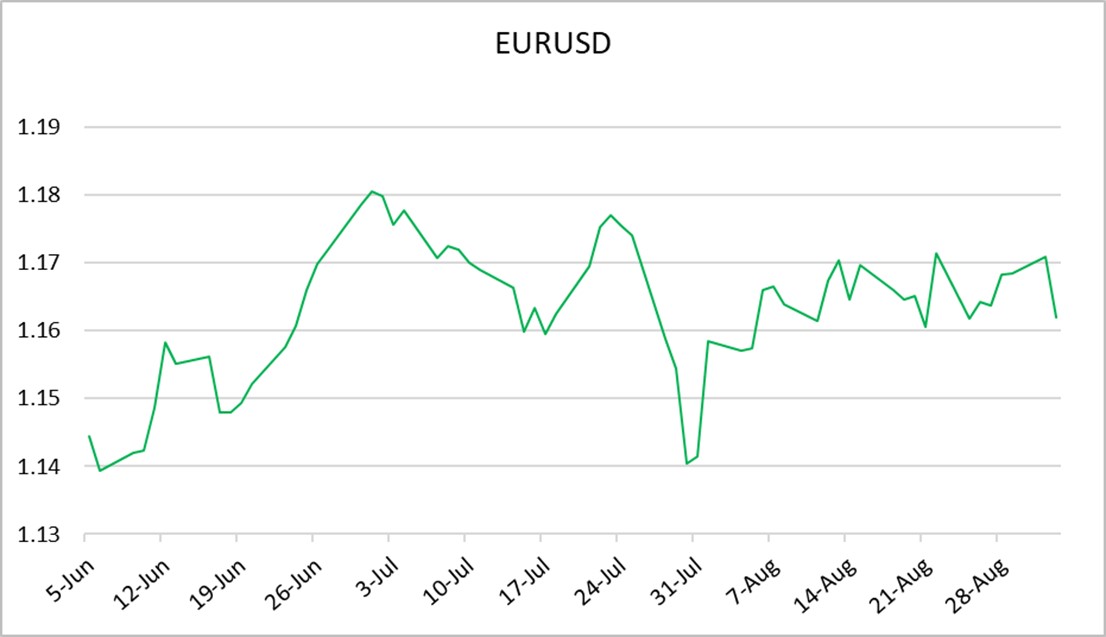
The euro was back and forth against the USD but overall, a bit weaker at 1.1525. The EURUSD traded below its prior 1.16-1-19 trading range, trading most of the month between 1.15-1.16.
EU inflation held steady at 2.1%, and the ECB held rates steady again at 2%. Rate cut odds are only 2%, so no rate cuts until 2026. Twenty-seven pages of Tariff exemption requests are pouring in from across the EU at the late November trade summit. These exemption requests are for everything from cheese to industrial equipment. If granted, these could change overall tariff levels considerably. Analysts polled by Bloomberg predict a median of 1.19 EURUSD rate for Q1 2026.
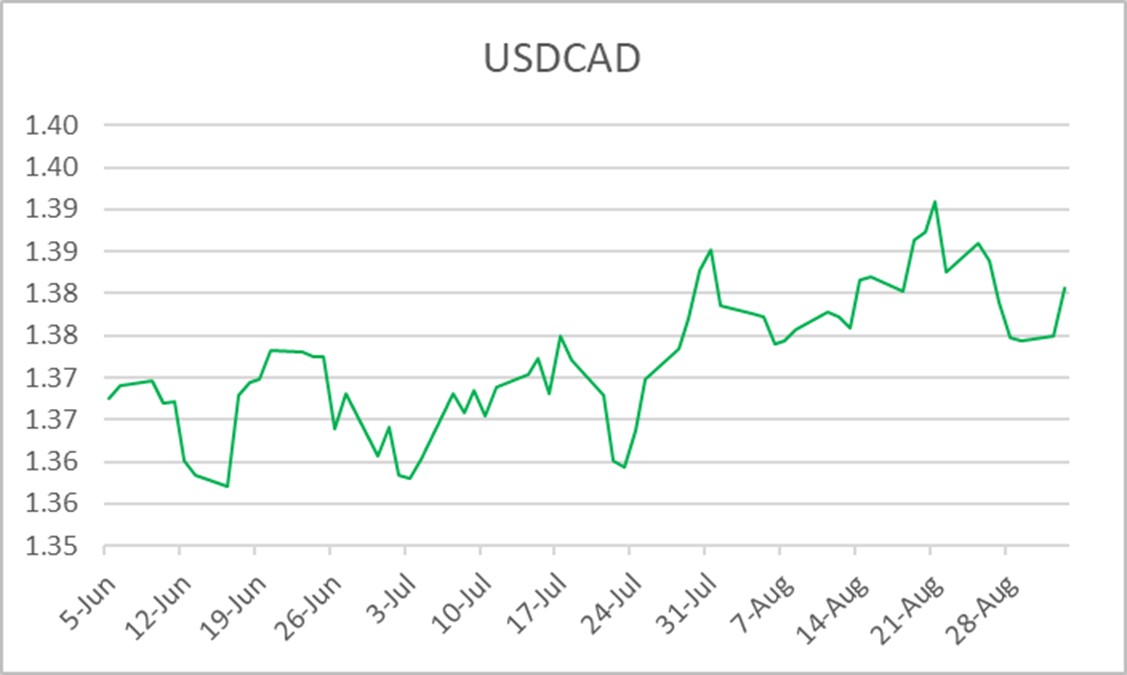
The Canadian dollar is seeing a sustained decline as tariffs bite into revenues for the Canadian economy. USDCAD trading to 1.4105. While Canada is seeing better relations with the USD under the Carney administration, the tariffs are having a significant impact on Canada. GDP growth is expected to be 0.5%, bouncing back from a surprise 0.3% drop last month. Consumer demand has held up surprisingly well, helping GDP. Oil has traded most of the month below $60. Canadian rates are 2.25%, with only 3% odds of a cut. Analysts polled by Bloomberg predict a median of 1.3800 for the USDCAD rate for Q1 2026.
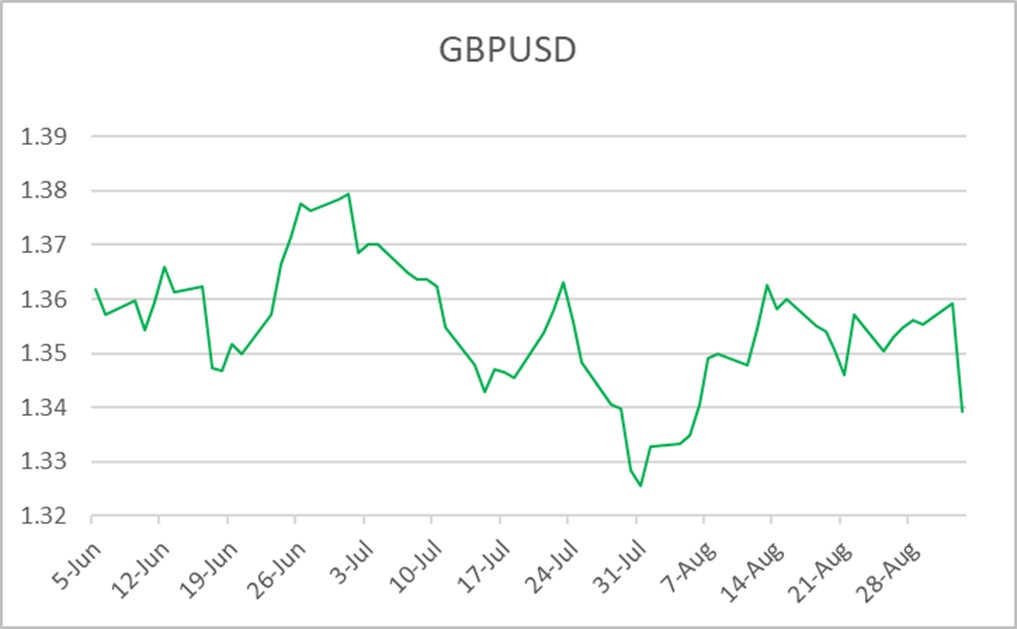
The British pound remained weak against the USD at 1.3109 as of November 24th. Inflation dropped to 3.6%, and softer wages and unemployment going to 5% point to a weaker economy. The news out of the UK has been quite negative, with PMI at 50.5 and the economy only showing 0.1% growth. The UK central bank kept rates steady at 4%, but cut odds jumped to 90% for the 12/28 meeting. Analysts polled by Bloomberg predict a median of 1.3500 for the GBPUSD rate in Q1 2026.
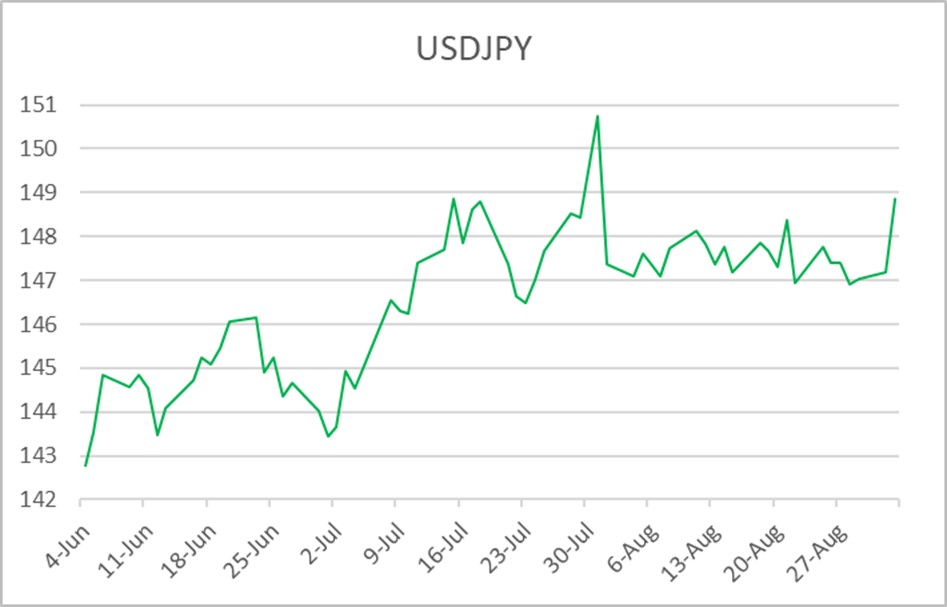
The Japanese yen continued to weaken against the USD trading to 156.81. These are among the weakest levels of the last 35 years. The new Prime Minister has been vocal about restoring Japanese competitiveness in world markets, and one way to do this to weaken the currency. Inflation in Japan remains high at 3.0%, and with rates at 0.5% and spending for 2026 is coming at huge deficits. With this, Japan has a recipe for a much weaker currency. Japan bond yields have risen to the highest levels since 2008, during the financial crisis. The JPY has lost 12% since tariffs were announced. Bloomberg Analysts expect a yen rate of 148 in Q2 2026.

The Mexican peso bounced off the lower end of its trading range to return to 18.5000. The Mexican economy surprised everyone by growing 1.8% in the first half of the year, but the forecast is for much weaker growth in the second half. Mexico saw record Foreign Direct Investment of $41bn in the first 9 months of 2025. Mexico is also now the top buyer of US goods in the world. Inflation eased to 3.61%, and the central bank dropped rates to 7.25%. Analysts polled by Bloomberg predict a median of 18.7200 for the USDMXN rate by Q2 2026.
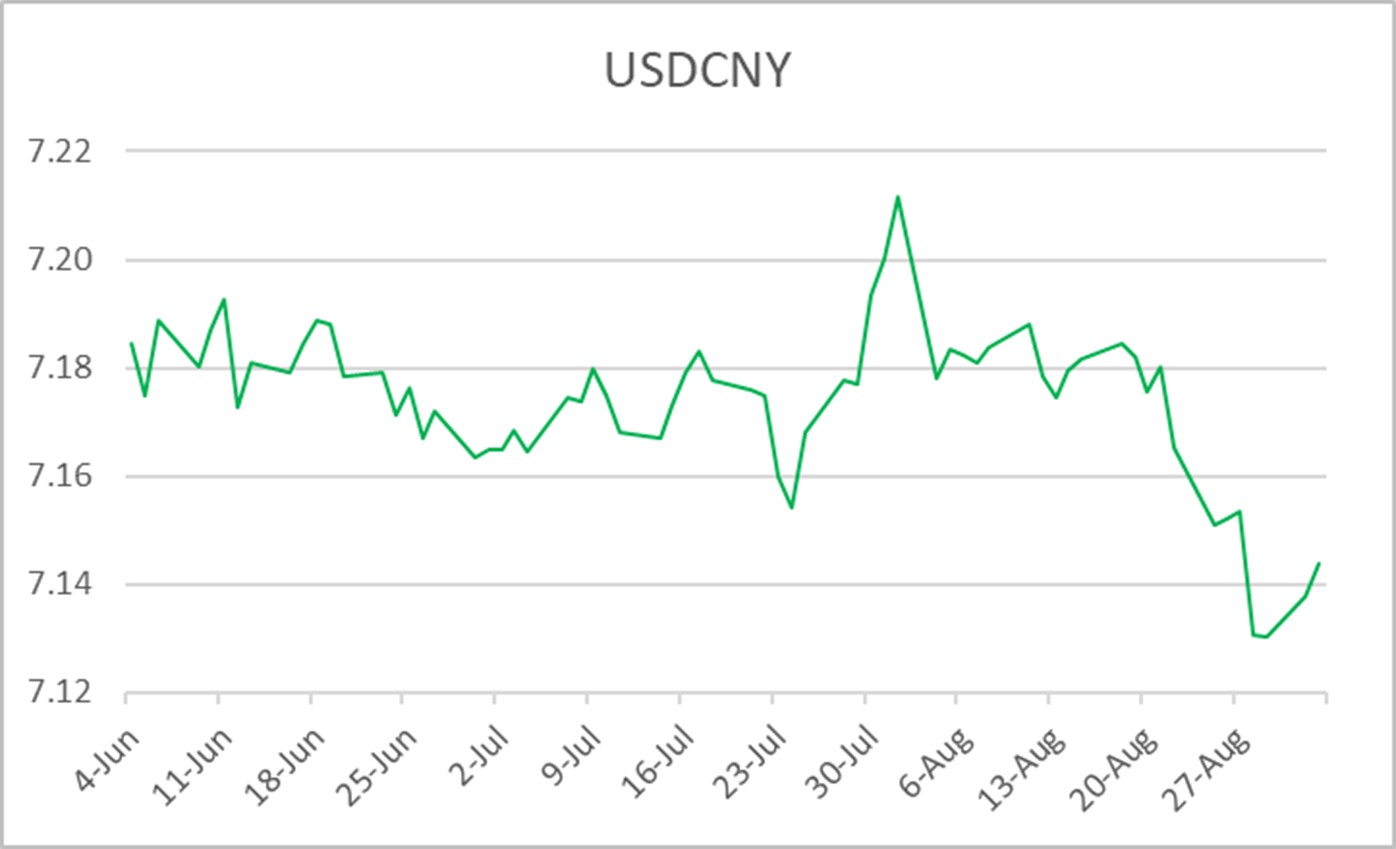
The Chinese yuan rallied to its strongest levels in 12 months to 7.0846. Third quarter growth slowed to 4.8%, but many analysts believe China is fudging the numbers and the actual number is much lower. Chinas official inflation rate is 0%, and retail sales and factory output slumped to the weakest levels in a year. There are reports of falling prices in China, as companies exports to US are falling. The trade deal announced in early November seems to need additional work as the administration spoke over the phone with Xi several times in November. Analysts polled by Bloomberg predict a median of 7.0800 for the USDCNY rate by Q2 2026.
Associated Bank can transact foreign exchanges in more than 100 currencies. Companies interested in learning more about making payments in foreign currencies or in hedging currency exposures should contact their Associated Bank Relationship Banker or the bank’s Corporate Foreign Exchange Department at 866-524-8836 or email fxcapmarkets@associatedbank.com.
All rates shown are indications only and subject to change. Foreign exchange contracts are subject to foreign currency exchange risk and are NOT deposits or obligations of, insured or guaranteed by Associated Bank, N.A. or any bank or affiliate, are NOT insured by the FDIC or any agency of the United States, and involve INVESTMENT RISK, including POSSIBLE LOSS OF VALUE. This material is provided to you for informational purposes only; and any use for other than informational purposes is disclaimed. It is a summary and does not purport to set forth all applicable terms or issues. It is not intended as an offer or solicitation for the purchase or sale of any financial product and is not a commitment by Associated Banc-Corp, its subsidiaries or affiliates, as to the availability of any such product at any time. The information herein is not intended to constitute legal, tax, accounting, or investment advice, and you should consult your own advisors as to such matters and the suitability of any transaction. We make no representations as to such matters or any other effects of any transaction. In no event shall we be liable for any use of, for any decision made or action taken in reliance upon, or for any inaccuracies or errors in, or omissions from, the information herein. The views expressed here are solely those of the author and do not reflect the views of Associated Banc-Corp, its subsidiaries or affiliates.

